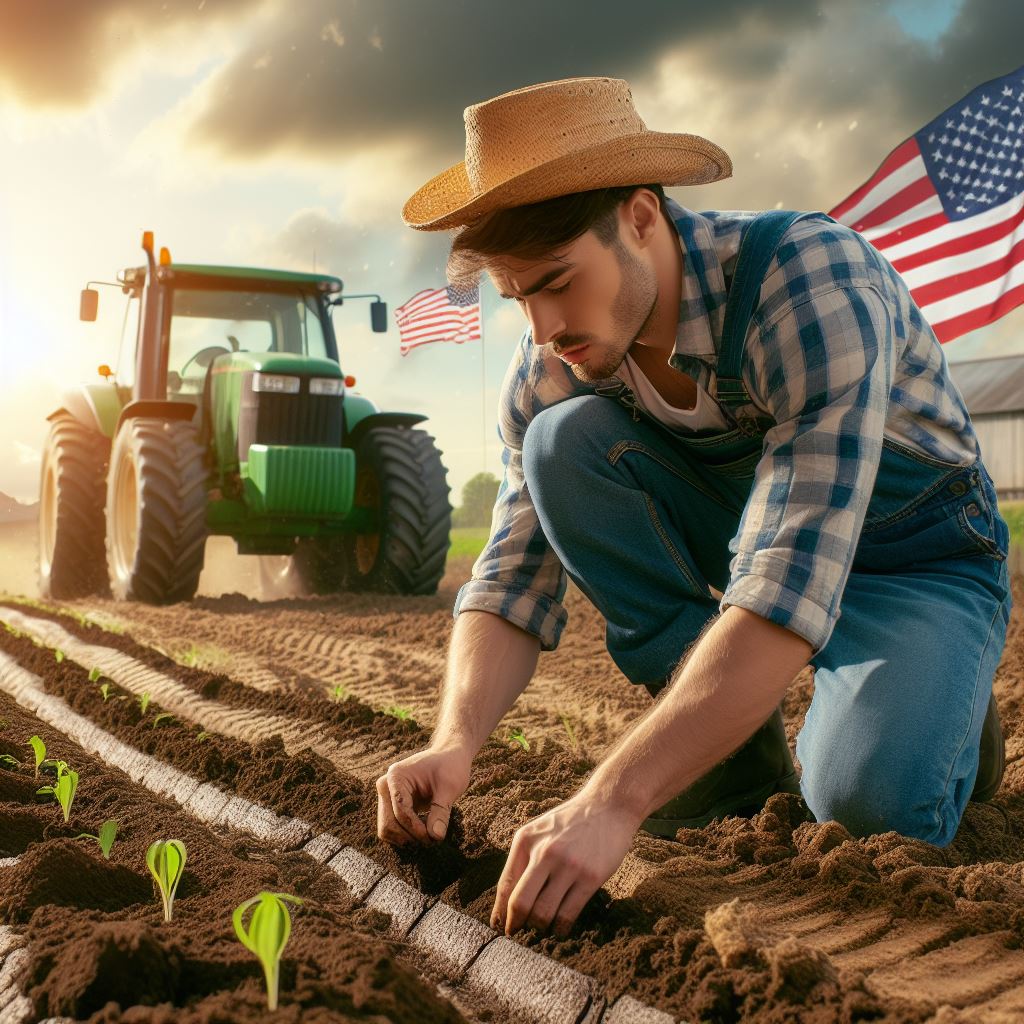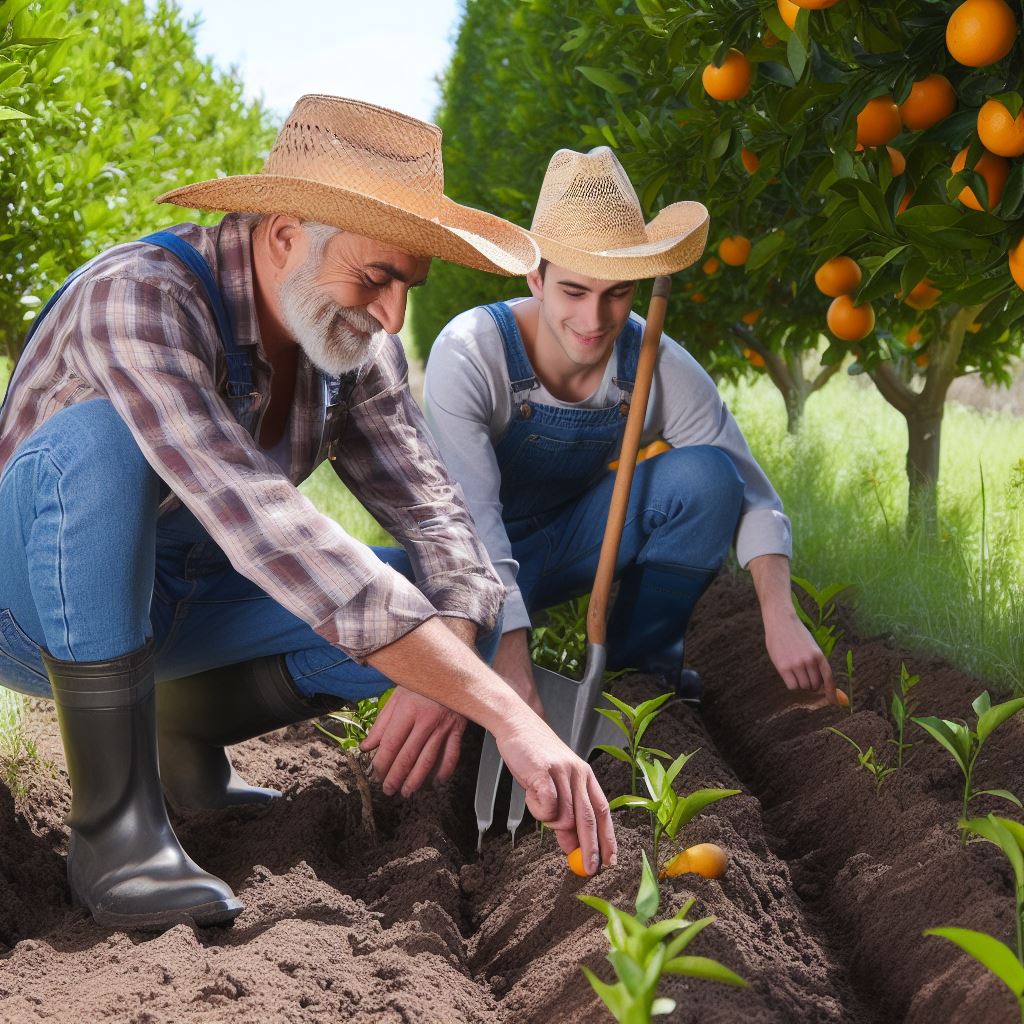Introduction
Community farming refers to a system where individuals come together to cultivate and harvest crops collectively.
Community farming plays a crucial role in promoting sustainable agriculture by fostering collaboration and resource sharing.
This blog section will provide a comprehensive overview of the concept and significance of community farming.
Benefits of community farming include increased access to locally grown, fresh and organic produce.
Community farming provides opportunities for social connections, skill-sharing, and knowledge exchange among participants.
It also promotes food security, resilience, and reduces the carbon footprint associated with long-distance food transportation.
Community farming can be initiated in various forms, such as community gardens, rooftop farming, and cooperative farming.
Participants often engage in activities like seed swaps, crop rotation, and composting to enhance soil health and biodiversity.
Additionally, community farming projects often prioritize education and offer workshops on sustainable farming practices.
Successful community farming requires effective communication, cooperation, and shared responsibilities among participants.
Local governments and organizations can support community farming initiatives by providing land, funding, and technical assistance.
By fostering strong connections and empowering communities, community farming contributes to the overall well-being and resilience of neighborhoods.
In essence, community farming is a powerful tool to transform the food system towards a more sustainable and inclusive future.
It not only provides numerous benefits for individuals and communities but also promotes environmental conservation and social cohesion.
Embracing community farming can lead to healthier, more resilient communities and a more sustainable food system for all.
Transform Your Agribusiness
Unlock your farm's potential with expert advice tailored to your needs. Get actionable steps that drive real results.
Get StartedRead: The Apple Orchard: Seasons of Hardship
Benefits of Community Farming
Community farming is more than just a way to produce food.
It has numerous benefits for both individuals and the community as a whole.
Encourages local food production
One of the key advantages of community farming is that it encourages local food production.
By growing food closer to where it will be consumed, community farming significantly reduces the carbon footprint associated with transportation.
This means fewer greenhouse gas emissions and a smaller impact on climate change.
In addition to its environmental benefits, community farming also enhances food security.
By having a local source of fresh produce, communities can become more self-reliant and less dependent on external food supplies.
This is especially important during times of crisis, such as natural disasters or disruptions in the global food system.
Fosters stronger community bonds
Furthermore, community farming fosters stronger bonds within the community.
It brings farmers and consumers together, creating opportunities for direct interaction and building trust.
By getting to know the people who grow their food, consumers develop a deeper appreciation for the hard work and dedication that goes into farming.
This connection leads to a sense of shared responsibility and support among community members.
Cooperation is another key aspect of community farming.
By working together, community members can pool resources, knowledge, and labor, making farming more efficient and productive.
This collaborative approach strengthens community ties and creates a spirit of mutual support.
Provides educational opportunities
Moreover, community farming offers valuable educational opportunities.
By participating in this farming projects, individuals can learn about sustainable farming practices.
They gain practical skills that can be applied in their own gardens or even inspire them to pursue a career in agriculture.
Additionally, it raises awareness about the importance of eating healthy, locally sourced food.
This knowledge empowers individuals to make informed choices and prioritize their well-being.
In general, this farming initiatives has a wide range of benefits.
From encouraging local food production and reducing carbon emissions to fostering stronger community bonds and providing educational opportunities, it plays a crucial role in creating sustainable and resilient communities.
By supporting and participating in this farming initiatives, individuals can contribute to a healthier, more connected, and environmentally conscious society.
Showcase Your Farming Business
Publish your professional farming services profile on our blog for a one-time fee of $200 and reach a dedicated audience of farmers and agribusiness owners.
Publish Your ProfileRead: Soil and Sweat: The Reality of Farming
The Role of Barns in Community Farming
Importance of barns in traditional farming
In traditional farming, barns have played a crucial role in various aspects of agricultural activities.
They have served as storage facilities for crops, equipment, and other farming necessities.
Barns have also provided shelter for livestock, protecting them from harsh weather conditions and predators.
Furthermore, barns have served as workspaces for farmers to carry out tasks such as repairing tools and machinery.
They have been the central hub for community members to come together and exchange ideas and knowledge.
Hence, the significance of barns in traditional farming cannot be overstated.
Adaptation of barns for community farming purposes
With the rise of this farming initiatives, barns have been adapted to accommodate the evolving needs of these projects.
1. Shared storage facilities for crops and equipment
One of the key functions of barns in communities farming is to provide shared storage spaces for crops and equipment.
These facilities enable the pooling of resources, eliminating the need for individual farmers to invest in separate storage areas.
2. Community events and gatherings
Barns have become communal spaces where community members come together for events and gatherings.
Farm-to-table dinners, workshops, and educational programs are often organized in these barns, fostering a sense of camaraderie.
3. Workspaces for collective projects
Barns have also been transformed into collaborative workspaces for collective farming projects.
Community members can engage in joint initiatives, such as processing produce or building agricultural infrastructure.
Examples of successful community farming initiatives using barns
1. Case study 1: XYZ Community Farm
XYZ Community Farm in rural New England has successfully utilized a barn to foster community engagement in farming.
The barn serves as a space for educational programs for both adults and children, promoting sustainable farming practices.
It also provides storage for the farm’s produce and equipment, making it a vital asset for the community.
2. Case study 2: ABC Sustainable Agriculture Cooperative
The ABC Sustainable Agriculture Cooperative in the Midwest has repurposed an old barn to support its farming initiatives.
The barn acts as a marketplace where cooperative members can sell their produce directly to the local community.
Additionally, it serves as a gathering place for workshops, cooking classes, and community celebrations.
These successful examples showcase the versatility of barns in supporting farming endeavors.
By adapting barns to meet the specific needs of community farms, they become more than just traditional agricultural structures.
Barns become the heart of collaborative farming, connecting people, resources, and knowledge for a more sustainable future.
Read: Tilling Tales: A Family Farm History

Learn More: Balancing Life: Diary of a Mini-Farm Owner
Challenges and Strategies in Community Farming
Limited resources and funding
1. Fundraising techniques for barn restoration and maintenance
In community farming, one of the significant challenges faced is the limited availability of resources and funding.
To overcome this, community farming projects can explore various fundraising techniques.
These include hosting community events and workshops, which not only raise funds but also involve the community in barn restoration and maintenance projects.
Crowdfunding campaigns through online platforms like Kickstarter and GoFundMe can also help generate funds from a wider audience.
2. Grant opportunities for community farming projects
Another strategy to tackle limited resources is to identify and apply for grant opportunities.
Researching grants offered by government agencies and nonprofit organizations can provide additional financial support.
Collaborating with local businesses and organizations can also result in sponsorship and funding opportunities.
Communication and organization within the community
1. Establishing clear goals and responsibilities
Effective communication and organization within the community are crucial for the success of community farming projects.
It is essential to establish clear goals and responsibilities, which can be achieved by holding regular community meetings.
These meetings provide a platform for discussing and deciding on common objectives for the farm.
Creating a shared vision and mission statement helps solidify community engagement and commitment.
2. Utilizing technology and social media platforms
Utilizing technology and social media platforms can enhance communication and outreach efforts.
Setting up a website or blog dedicated to the community farming project provides a centralized platform for sharing updates and information.
Social media platforms such as Facebook and Instagram can be utilized to engage and communicate with community members effectively.
Overcoming potential conflicts and differences in farming practices
1. Establishing guidelines and shared values
Potential conflicts and differences in farming practices may arise within the community.
Showcase Your Farming Business
Publish your professional farming services profile on our blog for a one-time fee of $200 and reach a dedicated audience of farmers and agribusiness owners.
Publish Your ProfileTo tackle this, establishing guidelines and shared values is crucial.
Community members can collaboratively create farming guidelines based on sustainable and eco-friendly practices.
Encouraging open discussions and debates can help find common ground and resolve conflicts through better understanding and compromise.
2. Facilitating open dialogues and compromise
Facilitating open dialogues and compromise is key to overcoming conflicts.
Organizing group discussions and workshops can provide a safe space for addressing concerns and finding solutions.
Active listening and understanding different perspectives are important for reaching effective compromise and maintaining harmonious relationships within the community.
By addressing these challenges and implementing strategic approaches, community’s farming projects can navigate through obstacles and foster a thriving farming communities.
Collaboration, clear communication, and shared values help build a strong foundation for sustainable and successful farming initiatives.
Read: Fields of Green: A Young Farmer Tale
Conclusion
Community farming brings numerous benefits: access to fresh produce, environmental sustainability, and an improved sense of community.
It does not only yields fresh produce but also cultivates shared success, from sustainable agriculture to strengthened bonds and healthier local economies.
Barns play a crucial role in fostering community connections; they serve as gathering spaces and centers for community activities.
Barns, standing as iconic symbols, are the communal heartbeats of community farms.
They resonate as hubs fostering collaboration, education, and memorable gatherings, becoming the backbone of shared agricultural endeavors.
Embrace the soil beneath your feet; support and actively engage in local farming initiatives.
Your involvement contributes to the growth of resilient, connected communities, where the barns echo with stories of shared toil and shared triumphs.
I encourage readers to actively support and participate in local this farming initiatives to strengthen our communities and promote sustainable practices.
Join hands, sow the seeds of change, and together, let’s cultivate a sustainable and flourishing future for all.




